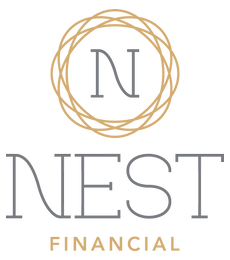Building a Diversified Portfolio You Can be Proud of
In the world of art, there are brilliant painters — masters of color, light, and composition. They capture an expression or the time of day just right, using the tools they have at hand. And then there are the people you would pay to never pick up a paintbrush again. Most fall somewhere in between.
The same is true for investing. Some people seem to have an uncanny sense for what moves to make and where to put their money. Some not so much.
The good news is that, just like in painting, you can improve your understanding of the medium, the lighting, and the tools at your disposal.
And with a bit of effort and guidance, your diversified portfolio can become a work of art.
Color Theory – Diversifying Your Portfolio with the Right Mix
Get out your figurative palette, grab your tubes of Prussian blue and cadmium green, and squeeze.
Because just as in mixing different colors of paint to achieve the perfect hue, your portfolio must also comprise the right blend for the goals you want to achieve.
But without learning the proper technique, you’ll just end up with a muddy brown.
To be successful in investing, you typically have to blend different investments to create a diversified portfolio. Diversification is one of the most basic investment strategies and is the process of decreasing your financial risk by investing in different things. It’s foundational because it’s critical.
Diversification goes beyond putting your money into different equities (stocks). The concept has grown to include investing in other classes of investments altogether, such as bonds, commodities, and mutual funds. By diversifying within and across these different silos, you give yourself access to all the benefits each has to offer, and find shelter from damage when one of them goes sideways.
It’s like having access to ALL the paint colors the art store has on offer. But having the colors doesn’t mean you know how to mix them. Similarly, it takes knowledge and skill to understand the characteristics of each type of investment, their strengths and weaknesses, and when to employ them.
The different categories react differently to economic changes. For example, if the equities market is going into a major correction, bond values may be rising or at least remaining stable.
When you understand the qualities of each type of investment category, the best time to put your money into them, and in what proportion, the colors of your portfolio will be as vibrant as the wind in Pocahontas.
Preparing Your Palette
In order to effectively use a diversification strategy, most professionals recommend investing in multiple categories.
Some examples of investment categories are:
- Stocks (equities)
- Bonds
- Mutual Funds (which can be made up of bonds, stocks, or a combination)
- CDs
- Savings Accounts
- Money Market Accounts
At NEST, our models include equities, bonds, commodities and currencies. Before you decide where to invest your money, and in what proportion, make an appointment with your financial advisor and discuss the following questions:
- What are my money goals?
- How much risk am I comfortable with?
- How long am I willing to keep my money in my investments?
- Will I be okay with watching my investments having daily price fluctuations?
If you don’t have a financial advisor, consider getting one. There can be a huge learning curve in the world of investing and financial planning. A curve you might not want to take alone when it comes to your hard-earned money.
Go Wild with Diversifying your Portfolio– or Don’t
Perhaps you’re the kind who just grabs a paintbrush, runs it through some paint, and slaps it on the canvas, enjoying the excitement of seeing what comes of it without much thought about getting paint on your shirt or “happy accidents” happening in the process.
Perhaps you sketch out your painting ahead of time, don a smock and lay out a drop-cloth before any paint leaves the tube.
It takes all kinds. The same is true in investing. You may be quite comfortable with risk and its potential windfalls — or losses. Or you may prefer to play it safe, taking a more modest and measured approach to growing your wealth.
In order to mitigate risk as much as possible, your diversified portfolio should be a reflection of your goals and investment style. If you’re still trying to figure out exactly what that means for you, here are some things to consider with your financial advisor:
- Your age
- Income
- Employment/self-employment
- Monthly expenses/money available for investing
- Family responsibilities
- Temperament
- When you want to retire
Whatever your goals, or your risk tolerance, it’s important to remember that as much as diversification can shield you from some of the losses involved in market gyrations, there is no way to completely eliminate risk or guarantee a profit.
Make a Masterpiece
And make it your own.
One of the biggest challenges artists (and investors) face is deciding how to use personal resources to accomplish their goals. Of course, you hope to create something that is unique to you, consistent with your personality and objectives, and executed in a way that you feel comfortable with. But you also want to make art money.
The lure of high returns can tempt investors to take risks that deviate from their plan and goals. This can lead to unrealistic expectations and can expose you and your nest egg to unnecessary risk.
Picasso didn’t get to be Picasso by chasing the latest fad or imitating someone else’s style. Similarly, remain true to your diversified investment strategy because it is a reflection of your personality, goals, both in the short and long term.
You don’t have to be Gordon Gekko. Be you, be patient, and the portfolio you create will be a bright picture for your future.





